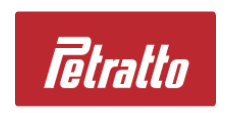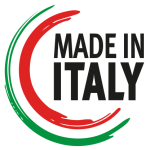This technology is used in advance to prevent the formation of the unsightly “cracking” effect on a folded printed sheet (avoiding the breaking of paper fibers during the folding phase) thus ensuring the highest quality of the product.
Creasing is a necessary step if you want to get a clean fold, mainly if you use heavy cartons and cardboards, even in case of laminated leaflets or signatures, offset or digitally printed UV-coated jobs, including on photographic paper.
The “die creasing tecnique” is carried out using the same blade and matrix tools used in a die cutting machine (die cutting blade and countermatrix).
It is different from the scoring technique and had been also more frequently used in the past years, thanks to the high quality results with all types of conditions (materials, paper fiber, treatments) and to its user friendly characteristics.
The under process job is perfectly registered and then the creasing blade strikes the paper against a matrix (even several times in the same position or with decimal displacements): this allows the adjustment of the depth and width of the creasing line.
With the same “die” mechanical technology, perforations can be done in a sheet of paper or cardboard, either as a continuous or a step perforation. This tecnique can be used to facilitate cutting along previously set lines, alternating it also with continuous or programmable longitudinal circular perforations (“coupon” type perforation).










